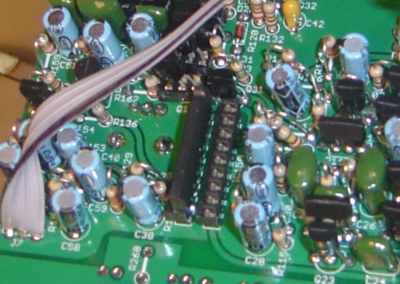
Shown here, the BA6110 chip (+4 transistors) inserted, BA662A slot empty.
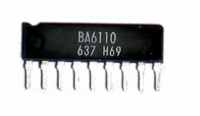
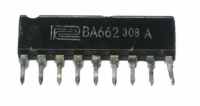
As we all know, the x0xb0x comes with the easier-to-find BA6110 VCA chip, while the original TB303 used the now-extremely-rare Roland BA662A VCA chip.
The x0xb0x provides a slot for each of these chips, so we can try each one to see what sounds more like a TB303.

Shown here, the BA6110 chip (+4 transistors) inserted, BA662A slot empty.
So I recently acquired 2 of the original Roland BA662A chips and decided to try them out in my x0xb0x to see what the difference could be.
At first listen, not a lot. I had to listen closely to hear any differences. But there are differences...
The big difference is that one chip makes the x0xb0x more quiet than the other chip.
There are also some very subtle spectral differences.
I acquired the chips from chipforbrains (found him through eBay and through chatting via email got lucky to have him offer to sell me these chips), they are reportedly "pulled" from another piece of gear, and have the numbers
209 and 504 on them.
Your luck will vary dealing with this seller and BA662A chips, I've emailed him 3-4 times in the last 6 months about these without a reply. My guess is that these are not normally available through Technology Transplant. The question of whether these are reproductions is in the air of course having come from Technology Transplant, but they did appear to be pulled, with visible solder markings on the leads.

VCA chips! Shown here is the x0xb0x-default BA6110, and the 2 used BA662A chips. Chip batch numbers from left to right are 727, 504, 209
Read on for details.
1.) BA662A is quieter than the BA6110 by about 4db...
|
BA662A BA6110 BA6110 About 3-7db more quiet when using the BA662A chip |
Here are some spectrographs comparing BA662A to BA6110 using the "fastsong" sequence.
The spectrograph of each looks very similar, but there are some subtle differences.
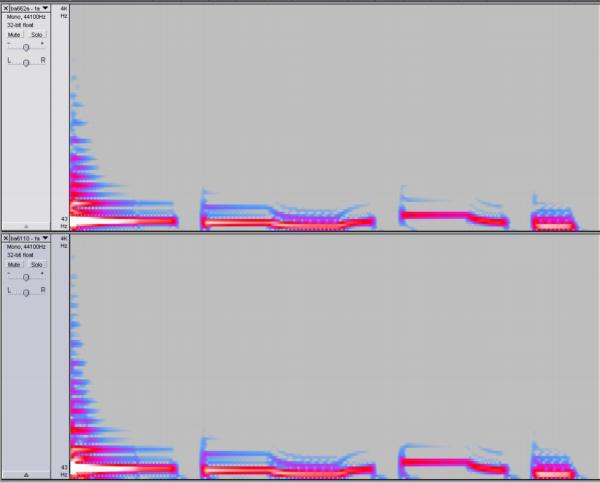
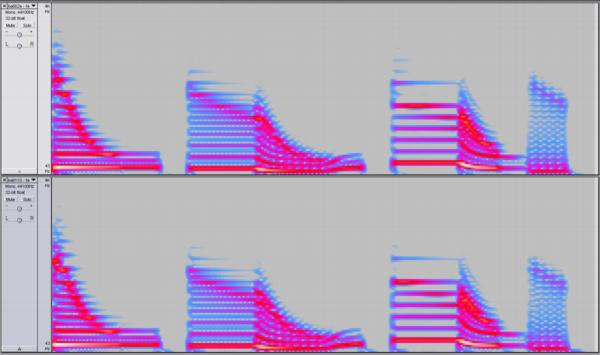
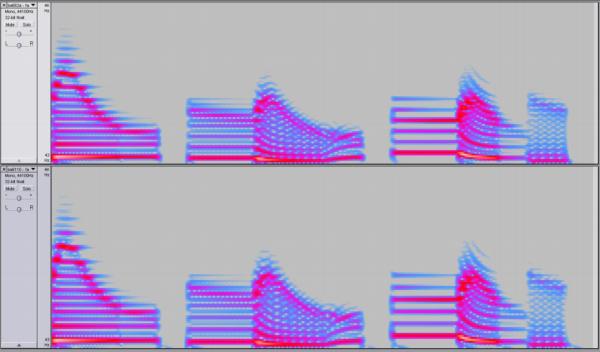
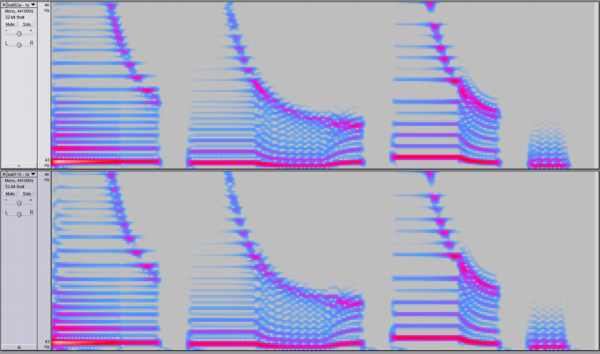 0-22khz:
0-22khz: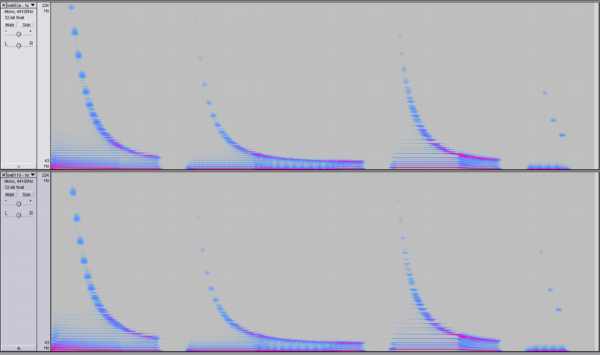
After normalizing any gain differences away (by adding 3-7db of gain to the BA662A track to make it match the loudness of the BA6110 track),
I listened to many of the tracks side by side. There are no glaring differences. But someone with more sensative ears may have another opinion.
I'll let you decide if it's right for you, but in my opinion I don't think it warrants tearing apart that Juno or even a crappy $40 HC-2 or CS-2 pedal for one of these...
That said, I plan to leave the BA662A chip in my x0xb0x, just to have the vintage part... ;-)